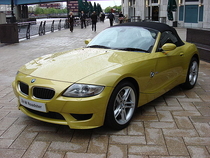
BMW M Coupé and Roadster
The BMW M Coupé and BMW M Roadster are high performance models of the BMW Z3 and Z4 coupés/roadsters produced by BMW M. The first generation was based on the Z3 and was produced between 1998 and 2002. The second generation was based on the Z4 and was produced between 2006 and 2008. All models were produced in the BMW Spartanburg plant in the United States. Some major components— such as the engine and transmission— were imported from Germany.
See all
0
0
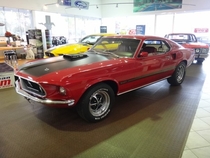
Ford Mustang
The Ford Mustang is an American car manufactured by Ford. It was originally conceived by Lee Iacocca. The Mustang debuted in 1964 with a price of $2,368, with estimated annual sales of 100,000. First year sales were over 400,000 units and one million within two years. The Mustang created the "pony car" class of American muscle cars, distinguished as affordable sporty coupes with long hoods and short rear decks, and gave rise to competitors such as the Chevrolet Camaro, Pontiac Firebird, AMC Javelin, Chrysler's revamped Plymouth Barracuda, and the second generation Dodge Challenger. The Mustang is also credited for inspiring the designs of coupés such as the Toyota Celica and Ford Capri, which were imported to the United States. It was originally based on the platform of the second generation North American Ford Falcon, a compact car. The original 1962 Ford Mustang I two-seater concept car had evolved into the 1963 Mustang II four-seater concept car which Ford used to pretest how the public would take interest in the first production Mustang. The 1963 Mustang II concept car was designed with a variation of the production model's front and rear ends with a roof that was 2.7 inches shorter. Introduced early on April 17, 1964 (16 days after the Plymouth Barracuda), and thus dubbed as a "1964½" by Mustang fans, the 1965 Mustang was the automaker's most successful launch since the Model A. The Mustang has undergone several transformations to its current sixth generation. The Ford Mustang began production five months before the normal start of the 1965 production year. The early production versions are often referred to as "1964½ models" but all Mustangs were advertised, VIN coded and titled by Ford as 1965 models, though minor design updates in August 1964 at the formal start of the 1965 production year contribute to tracking 1964½ production data separately from 1965 data (see data below). with production beginning in Dearborn, Michigan, on March 9, 1964; the new car was introduced to the public on April 17, 1964 at the New York World's Fair. Of the 1960s pony cars, the Mustang is the only model to remain in continuous production since its introduction. In August 2018, Ford produced the 10 millionth Mustang, a 2019 Wimbledon White convertible with a V8 engine (matching the first 1965 Mustang).
See all
0
0
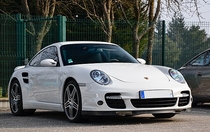
Porsche 911 (997)
The Porsche 997 is the sixth generation of the Porsche 911 sports car manufactured and sold by the German automobile manufacturer Porsche between 2004 (as Model Year 2005) and 2013. Production of the Carrera and Carrera S coupés began in early 2004, all-wheel drive Carrera 4 and Carrera 4S began to be delivered to customers in November 2005, the Turbo and GT3 derivatives went on sale in late 2006 and the GT2 in 2007. In addition to the coupé and cabriolet versions, Targa versions of the Carrera 4 and Carrera 4S were also available, which carry on with the "glass canopy" roof design used since its first application on the 993 until the 991, which reverted to the classic targa top layout used on the early 911 Targas. The 997 was an evolution of the preceding 996, with the most significant changes being interior and exterior styling, the most notable being the replacement of the "fried egg" headlamps used on the 996 with the classic "bug eye" units. Larger 18-inch wheels were fitted as standard, and other engineering changes include slightly increased power; however, the car is technically very similar to its predecessor albeit with many revisions. A new S version was offered, with additional power from a slightly larger engine, sports suspension, and sports exhaust. During 2009, Porsche updated the 997 line-up including styling changes, a new engine with direct injection and the introduction of the company's new "PDK" dual clutch transmission. As a result, the updated 997 models were faster, lighter and more fuel efficient than the outgoing versions, with improved handling. In the case of the 997 Turbo, a comprehensively re-tuned all wheel drive system with an optional "torque vectoring" system was also a part of the upgrades package; in an October 2009 preliminary review, Car and Driver magazine estimated that when equipped with the PDK transmission, the updated Turbo should be capable of accelerating from in three seconds. The 997 received mostly positive reviews from the worldwide motoring press; even British motoring journalist Jeremy Clarkson, a known detractor of Porsche cars, noted that the 997 will "make love to your fingertips and stir your soul."
See all
0
0
Toyota Celica
The is an automobile produced by Toyota from 1970 until 2006. The Celica name derives from the Latin word coelica meaning heavenly or celestial. In Japan, the Celica was exclusive to the Toyota Corolla Store dealer chain. Produced across seven generations, the Celica was powered by various four-cylinder engines, and bodystyles included convertibles, liftbacks, coupés and notchback coupés. In 1973, Toyota coined the term liftback to describe the Celica fastback hatchback, and used the name Liftback GT for the North American market. Like the Ford Mustang, the Celica concept was to attach a coupe body to the chassis and mechanicals from a high volume sedan, in this case the Toyota Carina. Some journalists thought it was based on the Corona due to some shared mechanical parts. The first three generations of North American market Celicas were powered by variants of Toyota's R series engine. In August 1985, the car's drive layout was changed from rear-wheel drive to front-wheel drive, and all-wheel drive turbocharged models were offered from 1986 to 1999. Variable valve timing came in certain Japanese models starting from December 1997 and became standard in all models from the 2000 model year. In 1986, the six-cylinder Celica Supra variant was spun off as a separate model, becoming simply the Supra. Lightly altered versions of the Celica were also sold through as the Corona Coupé through the Toyopet dealer network in the 1980s and as the Toyota Curren through the Vista network in the 1990s. The Toyota Celica Liftback GT won Motor Trend Car of the Year (Imported Vehicle) in 1976.
See all
0
0
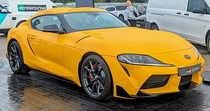
Toyota Supra
is a sports car and grand tourer manufactured by the Toyota Motor Corporation beginning in 1978. The name "supra" is derived from the Latin prefix, meaning "above", "to surpass" or "go beyond". The initial four generations of the Supra were produced from 1978 to 2002. The fifth generation has been produced since March 2019 and went on sale in May 2019. The styling of the original Supra was derived from the Toyota Celica, but it was both longer and wider. Starting in mid-1986, the A70 Supra became a separate model from the Celica. In turn, Toyota also stopped using the prefix Celica and named the car Supra. Owing to the similarity and past of the Celica's name, it is frequently mistaken for the Supra, and vice versa. The first, second and third generations of the Supra were assembled at the Tahara plant in Tahara, Aichi, while the fourth generation was assembled at the Motomachi plant in Toyota City. The 5th generation of the Supra is assembled alongside the G29 BMW Z4 in Graz, Austria by Magna Steyr. The Supra traces much of its roots back to the 2000GT owing to an inline-6 layout. The first three generations were offered with a direct descendant to the Crown's and 2000GT's M engine. Interior aspects were also similar, as was the chassis code "A". Along with this name, Toyota also included its own logo for the Supra. It was derived from the original Celica logo, being blue instead of orange. This logo was used until January 1986, when the A70 Supra was introduced. The new logo was similar in size, with orange writing on a red background, but without the dragon design. That logo, in turn, was on Supras until 1991 when Toyota switched to its current oval company logo. The dragon logo was a Celica logo regardless of what colour it was. It appeared on the first two generations of the Supra because they were officially Toyota Celicas. The dragon logo was used for the Celica line until it was also discontinued. In 1998, Toyota ceased sales of the fourth-generation Supra in the United States.
See all
0
0

Nissan Skyline GT-R
The is a Japanese sports car based on the Nissan Skyline range. The first cars named "Skyline GT-R" were produced between 1969 and 1972 under the model code KPGC10, and were successful in Japanese touring car racing events. This model was followed by a brief production run of second-generation cars, under model code KPGC110, in 1973. After a 16-year hiatus, the GT-R name was revived in 1989 as the BNR32 ("R32") Skyline GT-R. Group A specification versions of the R32 GT-R were used to win the Japanese Touring Car Championship for four years in a row. The R32 GT-R also had success in the Australian Touring Car Championship, with Jim Richards using it to win the championship in 1991 and Mark Skaife doing the same in 1992, until a regulation change excluded the GT-R in 1993. The technology and performance of the R32 GT-R prompted the Australian motoring publication Wheels to nickname the GT-R "Godzilla" in its July 1989 edition. Wheels then carried the name through all the generations of Skyline GT-Rs, most notably the R34 GT-R, which they nicknamed "Godzilla Returns", and described as "The best handling car we have ever driven". In tests conducted by automotive publications, R34 GT-R have covered a quarter of a mile (402 metres) in 12.2 seconds from a standing start time and accelerated from in 4.4 seconds. The Skyline GT-R became the flagship of Nissan performance, showcasing many advanced technologies including the ATTESA E-TS All-wheel drive system and the Super-HICAS four-wheel steering. Today, the car is popular for import drag racing, circuit track, time attack and events hosted by tuning magazines. Production of the Skyline GT-R ended in August 2002. The car was replaced by the GT-R (R35), an all-new vehicle based on an enhanced version of the Skyline V36 platform. Although visibly different, the two vehicles share similar design features and are manufactured in the same factory. The Skyline GT-R was never manufactured outside Japan, and the sole export markets were Hong Kong, Singapore, Australia and New Zealand, in 1991, and the UK (in 1997, due to the Single Vehicle Approval scheme). They are also popular across the world as used Japanese imports. Despite this, the Skyline GT-R has become an iconic sports car as a grey import vehicle in the Western world (mainly the United Kingdom, Australia, New Zealand, South Africa, Ireland, Canada, and the United States). It has become notable through pop culture such as The Fast and the Furious, Initial D, Shakotan Boogie, Wangan Midnight, Need for Speed, Forza, Driving Emotion Type-S, Test Drive, and Gran Turismo. In 2019, Nismo announced that it would resume production of spare parts for all generations of the Skyline GT-R, including body panels and engines. The car was named at the time by BBC's Top Gear as the only true Japanese contribution in the line of supercars, and by Jeremy Clarkson as one of the best cars in the world.
See all
0
0
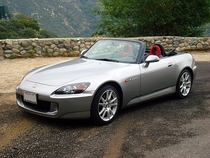
Honda S2000
The Honda S2000 is a front-mid engine open top sports car that was manufactured by Japanese automobile manufacturer Honda, from 1999 until 2009. First shown as a concept car called the SSM at the Tokyo Motor Show in 1995, the production version was launched on April 15, 1999, to celebrate the company's 50th anniversary. The S2000 is named for its engine displacement of two litres, while "S" stood for "sports" carrying on in the tradition of the S500, S600, and S800 roadsters of the 1960s. Several revisions were made throughout the car's production life, including changes to the engine, gearbox, suspension, interior and exterior. Officially two variants exist: the initial launch model was given the chassis code AP1; though cosmetically similar, the facelifted version, known as the AP2 in North America and Japan, incorporated significant changes to the drivetrain and suspension. Production of the S2000 ceased on August 19, 2009. The Honda S2000 was notable for its exceptional specific power output of about 124 hp per litre, or about two horsepower per cubic inch, the highest of any mass production, naturally aspirated engined car, until 2010. The S2000 has since become a legitimate modern classic car, having seen a significant appreciation in price for valued examples in good condition. In the JDM community and the car community as a whole, the most sought-after models are special edition productions such as the CR (Club Racer) in the USA market; the standard AP1 and AP2 models have achieved collectible status as well.
See all
0
0
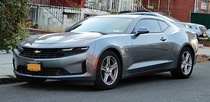
Chevrolet Camaro
The Chevrolet Camaro is a mid-size American automobile manufactured by Chevrolet, classified as a pony car and some versions also as a muscle car. It went on sale on September 29, 1966, for the 1967 model year and was designed as a competing model to the Ford Mustang. The car shared its platform and major components with the Pontiac Firebird, also introduced for 1967. Four distinct generations of the Camaro were developed before production ended in 2002. The nameplate was revived on a concept car that evolved into the fifth-generation Camaro; production started on March 16, 2009. Over 5 million Camaros have been sold.
See all
0
0

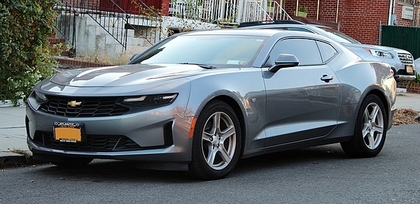






Comments